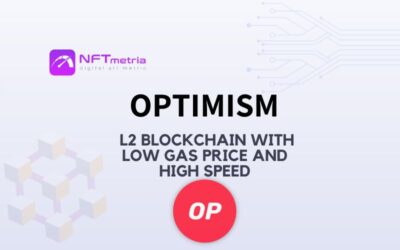Cardano is a third generation blockchain. Its distinguishing features are development using scientific philosophy and research approach by leading industry experts in the field of cryptography and blockchain. The ultimate goal of the blockchain is to create a completely open source project that will provide stable and secure financial services to users who do not have access to them. And the Cardano CCL architecture layer allows faster and more secure NFT operations such as creation and minting.
What is the Cardano blockchain?
Cardano is a blockchain for executing smart contracts and building decentralized applications. It was founded in 2015 by Charles Hoskinson, one of the founders of Ethereum. Cardano uses a Proof of Stake (PoS) consensus mechanism.
The blockchain also uses a unique, peer-reviewed development approach called “scientific philosophy” to ensure its technology is rigorously tested and secure. With a focus on sustainability, interoperability, and scalability, Cardano has gained a lot of momentum in recent years and is regarded as one of the leading blockchains of the future.
Cardano achieves security by breaking down its architecture into separate layers that solve separate problems. These levels include:
- Settlement Layer (CSL), which is responsible for processing cryptocurrency transactions,
- Computing layer (CCL), which is responsible for processing smart contracts and decentralized applications.
Moreover, one of the unique features of the blockchain is the use of the Haskell programming language, which is known for its high degree of accuracy and ability to write error-free code. This makes smart contracts more reliable and secure than other platforms.
Native token of Cardano blockchain
The native token of the Cardano blockchain is $ADA. It is also used for:
- Staking in the network itself,
- To pay for transactions.
At the moment, $ADA is in the top 10 cryptocurrencies with a capitalization of more than $13.27 billion. And the current rate is 1 ADA = $0.38.
How does the Cardano blockchain work?
The Cardano blockchain uses the Ouroboros protocol to fully function, which, in turn, operates using proof-of-stake (located on PoS). Ouroboros ensures the achievement of consensus between validators in the network, thereby solving the problem of energy consumption of computing power for mining blocks and ensuring network security.
Ouroboros will be able to secure the network if the system’s honest validators control more than 50 percent of the tokens on the blockchain.
Also, block generation and transaction confirmation on the Cardano network are facilitated by two elements of Cardano’s two-tier architecture:
- CSL that supports units of account (these are the elements that support transactions between users).
- CCL, which supports network security and smart contract execution.
Moreover, in order to achieve lower costs and high speed, transactions related to the execution of smart contracts are divided into smaller transactions.
That is, the actual operation of the blockchain looks like this:
- Separation of transactions using CSL and CCL,
- At the same time, in CSL, the transaction is not split when it enters the network,
- The transaction is processed by the validator as soon as it appears in the block;
- At the same time, multiple validators execute a transaction in CCL by dividing the transaction into several smaller ones.
- Transactions in CSL and CCL can be processed in the same block.
At the same time, the process of creating blocks in Ouroboros is based on an epochal approach, when at the beginning of each era leaders are elected to process transactions and sign blocks in certain slots. The choice of leaders and the assignment of slots are based on the distribution of stakes and the lottery system. A slot’s chances of winning are proportional to the amount of its hash and the percentage of coins it controls directly or through delegates. However, the leader of each slot is not determined by who first gets the desired hash. Cardano’s mechanism for selecting blocks as “canonical” increases as the number of blocks created on top of them grows, making the whole process more secure and transparent.
NFT smart contract standards for the Cardano blockchain
The NFT smart contract standards for the Cardano blockchain are ERC-721 and ERC-1155. The ERC-721 standard is used to represent a single, unique asset that cannot be duplicated or shared. And the ERC-1155 standard is an asset that combines both non-fungible tokens (ERC-721) and fungible ones, for example, in-game currency (ERC-20).
These standards ensure cross-platform interoperability and allow developers to create unique and verifiable digital assets on the Cardano network. Using these standards, developers can easily mint and trade NFTs without worrying about compatibility issues with other platforms.
What consensus mechanism does the Cardano blockchain use?
Cardano uses a consensus mechanism called Ouroboros, which comes from the Greek mythological symbol of a snake devouring its own tail. This is a proof-of-stake consensus algorithm. This means that it relies on validators with a stake in the network to approve transactions and create new blocks. This mechanism provides a more energy efficient and democratic process.
Ouroboros also provides security with a unique protocol that prevents malicious attacks by ensuring that validators cannot be controlled by a single entity.
What are the main applications of the Cardano blockchain?
The areas of application for Cardano are as follows:
- Games;
- DeFi;
- Collectibles;
- Gambling;
- NFTs;
- Social;
- Web 3.0.
The list doesn’t end there. Above are the most popular blockchain applications.
The Cardano blockchain ecosystem
The Cardano ecosystem consists of more than 30 dApps of different categories:
- Games,
- DeFi,
- Social,
- Casino,
- Marketplaces and others.
Popular dApps on the Cardano blockchain
The most popular dApps on Cardano are:
- MinSwap,
- SundaeSwap,
- Wingriders,
- JPG Store,
- Indego Protocol.
What is Cardano NFT?
Cardano NFTs are NFTs created on the Cardano blockchain. It is most commonly used for Games NFTs, Collectibles NFTs due to lower gas fees and speeds.
Top Cardano NFT Collections
The most popular collections on the Cardano blockchain are:
- Budz,
- Clay Nation,
- The Ape Society.
Budz
Budz is a collection of 10,000 space-themed NFTs. For now, only NFTs can be used as avatars in Cardano apps. To date, the volume of secondary sales of the collection exceeds 43 million ADA (about $16 million). Recently, the collection has been completely transferred to the Budz internal marketplace.

Clay Nation
Clay Nation is a collection of 10,000 NFT characters with algorithmically generated traits. Moreover, each feature is a creation of the manual labor of artists. The characters themselves are figures that look like works of art made of clay. The project partners include such big names and brands as Champ Medici, Snoop Dogg, The Sandbox, Good Charlotte, Ledger. On the secondary market, the collection’s secondary trading volume exceeds 35 million ADA (about $12 million).

The Ape Society
The Ape Society is a collection of 7,000 evolved monkeys (PFP type). Their image is similar to the image of people from the 15th-19th centuries; You can find the legend of the project on the official website of the collection. NFT owners of this collection are given access to the DAO and the project community. On the secondary market, the collection’s trading volume exceeds 33 million ADA (about $12.3 million).

Which wallets are suitable for holding Cardano NFTs?
Almost all multi-currency wallets are suitable for storing NFT Cardano. The most popular wallets for storing Cardano NFTs are:
- Trust Wallet,
- Ledger,
- SafePal.
How to buy Cardano NFTs?
- Remember that initially you need to connect your crypto wallet with self-storage to the marketplace of your choice.
- Next, find the official collection using the search bar on the marketplace.
- Analyze and choose the NFT you want to buy; click on it and then on the “Buy” button.
- When buying, consider the cost of transaction fees.
Where to buy Cardano NFTs?
You can buy Cardano NFTs on marketplaces. To date, these are not the most popular, but at the same time quite convenient sites.
Here are the most popular among them:
- JPG Store,
- CNFT.io,
- Tokhun,
- Galaxy of Art (GOA),
- Cardahub,
- AdaNFT.











